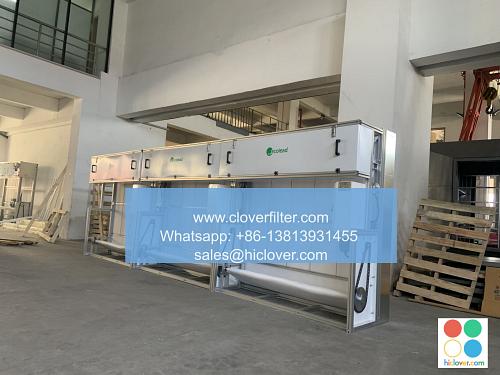Air Filter Adoption Rates: A Comparative Study of Developed and Developing Societies

Introduction
The use of air filters has become increasingly important in modern society, particularly with the growing concern about indoor air quality and its impact on human health. Air pollution is a significant problem worldwide, and the adoption of air filters can play a crucial role in mitigating its effects. This article compares the adoption rates of air filters in developed and developing societies, highlighting various application areas, including indoor air quality management, air pollution control, and healthcare facilities.
Developed Societies: High Adoption Rates and Advanced Technologies
In developed countries, such as the United States, Europe, and Japan, the adoption of air filters is widespread, driven by stringent air quality regulations, increased awareness of indoor air pollution, and advanced technologies. These societies have seen a significant increase in the use of high-efficiency particulate air (HEPA) filters, activated carbon filters, and ultraviolet (UV) light air purifiers. The residential sector has been a major driver of air filter adoption, with many homeowners installing whole-house air filtration systems to improve indoor air quality.
Developing Societies: Lower Adoption Rates and Emerging Trends
In contrast, developing countries, such as those in Africa, Asia, and Latin America, have lower air filter adoption rates, primarily due to limited economic resources, lack of awareness about indoor air pollution, and limited access to advanced technologies. However, there are emerging trends in these societies, such as the growing use of low-cost air filters and innovative air purification technologies, including biosensors and nanotechnology-based air filters. The industrial sector has been a key driver of air filter adoption in developing societies, with many factories and commercial establishments installing air filtration systems to comply with local regulations and improve worker health and productivity.
Comparative Analysis of Adoption Rates
A comparative analysis of air filter adoption rates in developed and developing societies reveals significant differences. Developed countries have an average adoption rate of 70-80%, while developing countries have an average adoption rate of 20-30%. The main factors contributing to these differences are economic factors, awareness and education, and access to technology. However, there are opportunities for growth in developing societies, particularly in the residential sector, where there is a growing demand for affordable air filtration solutions.
Application Areas and Emerging Trends
Air filters have various application areas, including indoor air quality management, air pollution control, healthcare facilities, and industrial processes. Emerging trends in air filter technology include the use of artificial intelligence (AI), Internet of Things (IoT), and -big data analytics to optimize air filter performance and improve indoor air quality. Additionally, there is a growing focus on sustainable air filtration solutions, including energy-efficient air filters and eco-friendly air purification technologies.
Conclusion
The adoption of air filters varies significantly between developed and developing societies, with developed countries having higher adoption rates and more advanced technologies. However, there are emerging trends and opportunities for growth in developing societies, particularly in the residential sector. As the world becomes increasingly aware of the importance of indoor air quality, the demand for air filters is likely to grow, driving innovation and adoption in various application areas, including indoor air quality management, air pollution control, and healthcare facilities. You haven’t asked a question or provided a topic for discussion. What would you like to talk about?

